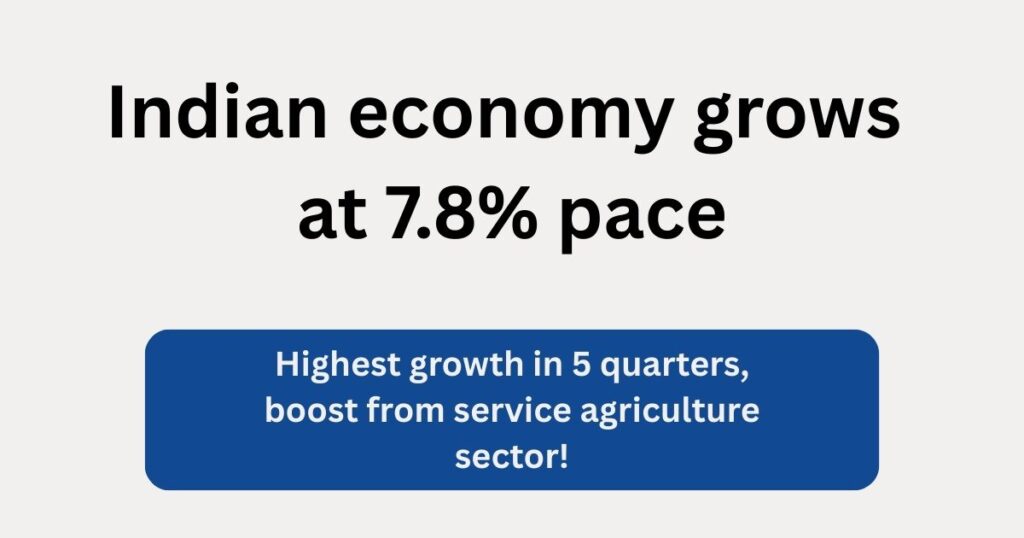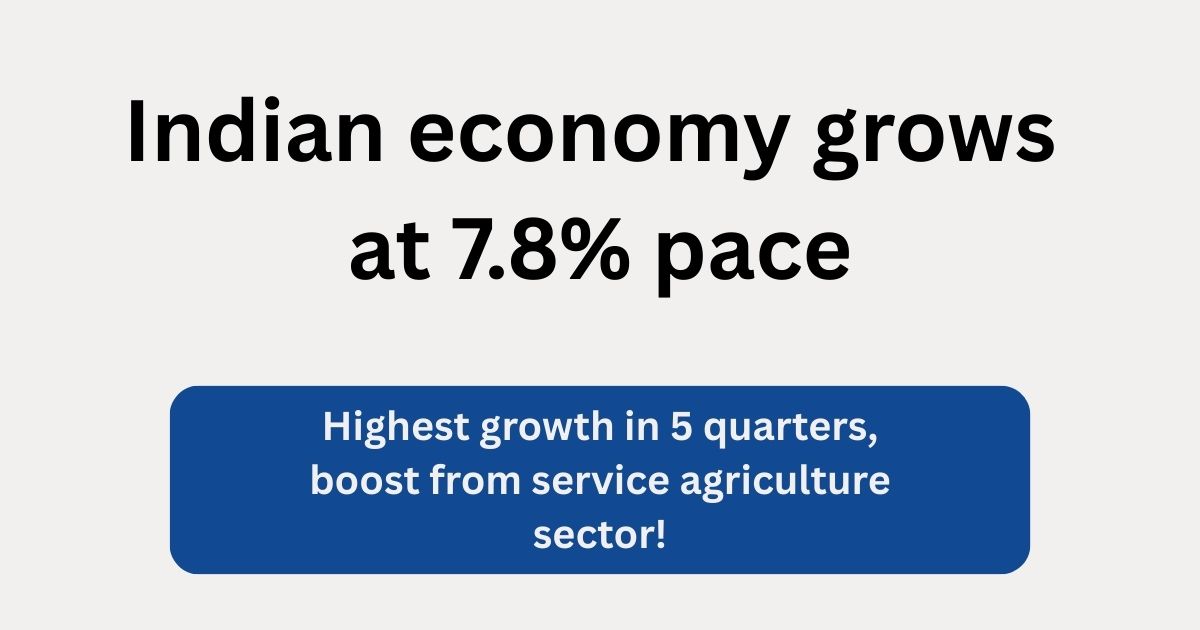Indian economy grew at 7.8%, which is the highest in the last 5 quarters. In this article, we will know 5 major reasons for GDP growth, RBI report, Trump’s statement, what is GDP, its types, calculation formula and factors affecting GDP.

Indian economy growth rate has set a record in the first quarter of the financial year (April-June). GDP growth rate on financial year-on-year basis has increased from 6.5% to 7.8%, which is the highest in the last 5 quarters. Good performance of manufacturing sector, service sector and agriculture sector has contributed significantly to this strong economic growth. According to experts, the growth rate of Indian economy is likely to increase rapidly in the coming months as well.
After imposing a 25% tariff on India on July 31, US President Donald Trump called the economies of India and Russia “dead economies”. Trump had given a statement that India and Russia can sink along with their economic growth, it will not affect America. This statement was in discussion at that time, and its effect was also seen on the Indian economy.
India’s GDP growth has registered a boom in the first quarter.
India’s GDP growth has registered a boom in the first quarter of the financial year 2025-26, behind which there are many important reasons.
- Service sector boom – The service sector, which includes trade, hotels, transport, financial services and other services, has seen the highest boom. The growth rate of this sector was 9.3%.
- Growth in manufacturing and construction – Manufacturing and construction industries have registered growth of more than 7.5%, strengthening the Indian economy.
- Increase in spending – Private consumption expenditure has increased by 7.0%. At the same time, government expenditure has also increased from 4.0% last year to 9.7%.
- Boost in investment – Gross Fixed Capital Formation (GFCF) has seen a growth of 7.8% in this quarter, which supports economic growth.
- Improvement in agriculture sector – The growth rate of agriculture and related sectors has increased from 1.5% last year to 3.7%, which is a positive sign for the Indian economy.
RBI maintains 6.5% economy growth forecast for FY26.
In the monetary policy meeting of the Reserve Bank (RBI) held on August 6, the growth rate of the Indian economy for the financial year 2025-26 (FY26) was maintained at 6.5%. The RBI Governor said that good monsoon, increasing festival season and supportive economic policies of the government are giving positive signs for GDP growth in the near future.
Although challenges related to global trade still persist, geopolitical uncertainties have reduced to some extent, which can provide stability to the Indian economy.
What is GDP (Gross Domestic Product)?
GDP (Gross Domestic Product) is a major measure to measure the health of any country’s economy. It reflects the total value of all goods and services produced within the country in a given period of time. The production of foreign companies operating within the country’s borders is also included in the GDP calculation. That is why GDP growth rate is considered an important indicator to understand the economic progress and financial performance of a country.
Types of GDP: Real GDP and Nominal GDP.
GDP (Gross Domestic Product) is of two types – real GDP and nominal GDP.
- In real GDP, the value of goods and services is calculated on the value of the base year or stable price. Currently, the base year for GDP calculation in India has been fixed as 2011-12.
- At the same time, nominal GDP is calculated on current prices, which also includes the effect of inflation.
The economic growth rate can be understood better by comparing real and nominal GDP.
How is GDP calculated?
A special GDP calculation formula is used to measure GDP (Gross Domestic Product):
GDP = C + G + I + NX
- C (Private Consumption): It includes private consumption of goods and services by people within the country.
- G (Government Spending): It includes government expenditure such as infrastructure, subsidies, schemes and other public services.
- I (Investment): It includes the value of total investment made by both private and public sectors.
- NX (Net Export): It takes the value obtained by subtracting total imports from total exports.
Based on this formula, India’s GDP growth rate is measured correctly, so that the economic health of the country can be estimated.
Main factors affecting GDP.
There are four major economic engines that affect India’s GDP growth.
- Private Consumption – The amount you and I spend directly contributes to the growth of the economy.
- Private Sector Business Growth – The growth of private companies contributes about 32% to GDP, which is a major pillar of economic development.
- Government Spending – The total expenditure of the government on goods and services production also plays an important role in GDP. Its contribution is about 11%.
- Net Demand – In this, total imports are subtracted from India’s total exports. Since imports in India are more than exports, the effect of net demand on GDP growth is often negative.
The balance of these four factors determines the growth rate of the Indian economy.
Disclaimer: The information given in this article is for educational purposes only. If you want to invest in the stock market, you should learn about the stock market yourself or consult a financial advisor and certified expert. The stock market is risky. Before making any investment, you must consult an expert.
Conclusion
In this article, you have been told in detail about the Indian economy growing at 7.8%, the highest growth in 5 quarters, boost from service-agriculture sector. If you liked the information given in this article, please like, share and comment on this article.

